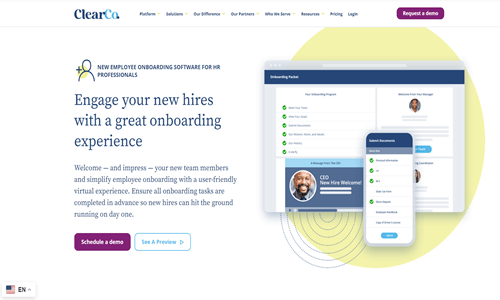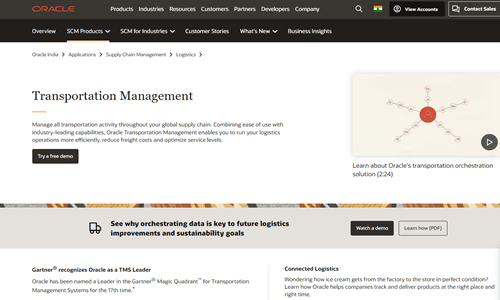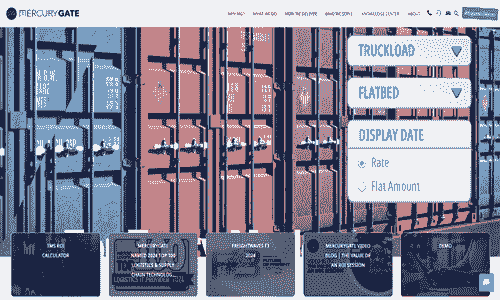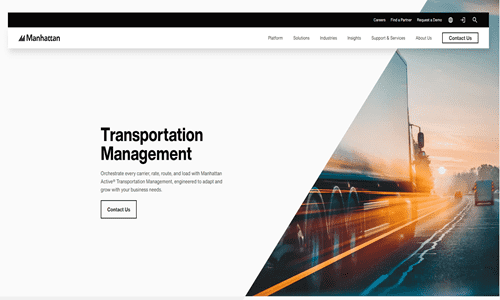
Transportation Management System Software: Driving Business Success
In today’s fast-paced and highly competitive business environment, efficient transportation management is crucial for organizations that rely on moving goods and materials. Whether you’re a manufacturer, retailer, or logistics service provider, an effective transportation management system (TMS) can be a game-changer, enabling you to streamline operations, reduce costs, and provide exceptional customer service. This powerful software solution empowers businesses to optimize transportation planning, execution, and visibility, ensuring timely and cost-effective delivery of shipments across the supply chain.
What is a Transportation Management System?
A software program called a Transportation Management System (TMS) was created to assist companies in effectively managing and streamlining their logistics and transportation operations. It offers a consolidated platform for organizing, carrying out, and monitoring the transportation of commodities from the place of origin to the destination.
Route planning, freight consolidation, carrier selection, load optimization, shipment tracking, and performance analytics are just a few of the features included in TMS. By automating and simplifying these procedures, TMS helps businesses lower expenses, increase insight into supply chain activities, and guarantee on-time delivery of goods. Furthermore, TMS can interface with other supply chain management systems, including Enterprise Resource Planning (ERP) and Warehouse Management Systems (WMS), enabling smooth coordination between various company functional areas.
Importance of Transportation Management System
A Transportation Management System (TMS) is crucial in modern logistics and supply chain operations. Here are some key points elaborating on its importance:
Efficiency:
Transportation management systems (TMS) facilitate route optimization, cargo consolidation, and the reduction of empty miles. This efficiency results in faster delivery times and cost savings.
Visibility:
With TMS, businesses can see real-time information about their transportation network. They can also enable proactive decision-making by tracking shipments, monitoring carrier performance, and foreseeing possible disruptions.
Inventory Management:
TMS integration with inventory systems enables better inventory planning and control. By synchronizing transportation with inventory levels, businesses can avoid stockouts, minimize excess inventory, and improve overall supply chain efficiency.
Customer Service:
A well-implemented TMS enhances customer satisfaction by providing accurate delivery estimates, proactive notifications about delays, and improved order accuracy. Meeting customer expectations for timely and reliable deliveries can boost loyalty and retention.
Cost Reduction:
By optimizing routes, consolidating shipments, and negotiating better rates with carriers, TMS helps lower transportation costs. Additionally, it minimizes the need for expedited shipments and reduces detention and demurrage charges.
Data Analysis and Reporting:
TMS generates comprehensive data and analytics on transportation activities, enabling businesses to identify trends, spot inefficiencies, and make data-driven decisions. Reports on key performance indicators (KPIs) help measure transportation operations’ effectiveness and identify areas for improvement.
Compliance and Risk Management:
TMS helps ensure compliance with regulations and industry standards, such as carrier safety regulations and environmental requirements. By monitoring carrier performance and enforcing compliance measures, businesses can mitigate risks associated with transportation operations.
Scalability:
As businesses grow and evolve, TMS provides scalability to accommodate increased transportation needs. Whether expanding into new markets or handling seasonal fluctuations in demand, TMS offers flexibility to adapt to changing business requirements.
Key Features of Transportation Management System
Route Optimization:
TMS software calculates the most efficient shipping routes, considering distance, traffic conditions, and delivery time windows. This feature helps minimize transportation costs and improve delivery speed.
Load Consolidation:
TMS allows for the consolidation of shipments to maximize truckload utilization. Businesses can reduce transportation expenses and carbon emissions by combining multiple smaller shipments into fewer, larger ones.
Carrier Management:
TMS facilitates carrier selection and management by providing a centralized platform to compare rates, track performance metrics, and manage contracts. This feature helps businesses work with reliable carriers that meet their transportation needs.
Real-Time Tracking:
Throughout the transportation process, TMS offers real-time visibility into the location and status of goods. With this tool, shippers and customers may easily handle exceptions, anticipate delays, and track delivery.
Warehouse Integration:
Integration with warehouse management systems (WMS) enables seamless coordination between transportation and warehousing activities. TMS can generate pick lists, allocate inventory, and schedule shipments based on warehouse availability and order fulfillment priorities.
Freight Audit and Payment:
TMS automates the auditing and payment of freight invoices, helping businesses identify billing discrepancies, reconcile charges, and ensure accurate payment to carriers. This feature streamlines accounting processes and improves financial transparency.
Performance Analytics:
TMS generates reports and analytics on key performance indicators (KPIs) related to transportation operations. Users can analyze data on carrier performance, transit times, on-time delivery rates, and transportation costs to identify trends and areas for improvement.
Inventory Visibility:
Some TMS solutions offer inventory visibility features that enable businesses to track inventory in transit. Integrating with inventory management systems, TMS provides real-time updates on inventory levels, stockouts, and replenishment needs.
Compliance Management:
TMS helps ensure compliance with transportation regulations and industry standards. It can automate documentation, manage permits and licenses, and provide alerts for regulatory changes or violations.
Scalability and Customization:
TMS solutions are scalable to accommodate businesses of varying sizes and transportation complexities. They often offer customization options to tailor features and workflows to specific industry requirements or organizational preferences.
Benefits of Transportation Management System
Cost Reduction:
TMS helps reduce transportation costs through route optimization, load consolidation, and better carrier selection. Businesses can achieve substantial cost savings by minimizing empty miles, optimizing fuel usage, and leveraging freight consolidation opportunities.
Improved Efficiency:
Automation of manual tasks such as load planning, carrier selection, and freight audit/payment streamlines operations and reduces administrative overhead. This efficiency allows businesses to process orders faster, improve on-time delivery performance, and handle larger shipments with fewer resources.
Enhanced Visibility:
From order placing to delivery, TMS offers real-time visibility into the whole transportation process. Businesses may improve decision-making and customer service by tracking the location and status of shipments, anticipating possible delays, and proactively managing exceptions when they have tracking and monitoring capabilities.
Inventory Optimization:
Integration between TMS and inventory management systems enables better transportation and inventory level synchronization. This integration helps minimize stockouts, reduce excess inventory holding costs, and improve inventory turnover rates, ultimately optimizing working capital and warehouse space utilization.
Improved Customer Service:
TMS improves customer loyalty and satisfaction by guaranteeing prompt and dependable deliveries. Proactive alerts regarding shipment progress, precise delivery estimates, and prompt customer service all contribute to creating happy customers and enduring partnerships.
Strategic Insights:
TMS generates comprehensive data and analytics on transportation activities, carrier performance, and cost metrics. These insights enable businesses to identify trends, spot inefficiencies, and make data-driven decisions to improve transportation operations and overall supply chain performance continuously.
Regulatory Compliance:
TMS helps ensure compliance with transportation regulations and industry standards. By automating documentation, managing permits, and providing alerts for regulatory changes, businesses can avoid penalties, reduce compliance risks, and maintain operational continuity.
Scalability and Adaptability:
TMS solutions are scalable and adaptable to accommodate businesses of varying sizes and evolving transportation needs. Whether expanding into new markets, adding new distribution channels, or adapting to changing customer demands, TMS provides the flexibility to scale operations efficiently.
Challenges in Implementing a Transportation Management System
Integration Complexity:
Integrating TMS with existing systems, such as Enterprise Resource Planning (ERP) or Warehouse Management Systems (WMS), can be complex and time-consuming. Data migration, system configuration, and compatibility between software platforms require careful planning and coordination.
Change Management:
Adopting a new TMS often entails changes to existing processes, workflows, and employee roles. Resistance to change, lack of user buy-in, and inadequate training can hinder adoption and lead to implementation delays or inefficiencies.
Data Quality and Accuracy:
TMS relies on accurate and up-to-date data for effective decision-making and performance measurement. Incomplete or inaccurate data, fragmented data sources, and data silos within the organization can undermine the effectiveness of the system and lead to suboptimal outcomes.
Carrier Onboarding and Collaboration:
Establishing relationships with carriers, negotiating contracts, and onboarding them onto the TMS platform can be challenging. Differences in technology capabilities, communication protocols, and business processes may require effort to align and streamline collaboration.
Customization and Configuration:
Customization and setup are frequently necessary when adjusting the TMS to satisfy certain corporate needs and industry restrictions. It can be difficult to compromise between the requirement for modification and the need for out-of-the-box capabilities since too much customization can make maintenance and implementation more complicated.
Resource Constraints:
Implementing a TMS requires dedicated resources, including personnel, time, and budget. Limited resources, competing priorities, and organizational constraints may hinder implementation and delay project timelines.
Scalability and Future-proofing:
As business requirements evolve and grow, ensuring the scalability and flexibility of the TMS becomes crucial. Selecting a TMS solution that can accommodate future expansion, technological advancements, and changing market dynamics is essential to long-term success.
Compliance and Regulatory Challenges:
Compliance with transportation regulations, such as safety standards, customs requirements, and environmental regulations, poses challenges for TMS implementation. Keeping up-to-date with regulatory changes, ensuring compliance across multiple jurisdictions, and implementing necessary controls can be complex and resource-intensive.
Performance Measurement and Optimization:
Establishing key performance indicators (KPIs), monitoring system performance, and continuously optimizing transportation processes require ongoing effort and investment. With robust performance measurement and optimization capabilities, businesses may be able to realize the full benefits of their TMS investment.
Example of Transportation Management System
Oracle Transportation Management (OTM):

OTM is a comprehensive transportation management system designed to manage all aspects of transportation logistics, including planning, execution, and freight payment.
Pros:
Robust functionality, scalability, integration with other Oracle products, and advanced optimization capabilities.
Cons:
High initial investment complexity may require extensive training.
Used for:
Large enterprises with complex transportation networks.
Pricing Package:
Usually, pricing is tailored to the particular requirements and size of the company.
MercuryGate TMS:

MercuryGate offers a cloud-based transportation management system that optimizes transportation operations and enhances visibility.
Pros:
User-friendly interface, extensive reporting capabilities, and adaptability to various industries.
Cons:
Limited customer support and occasional performance issues.
Used for:
Mid-sized to large companies looking for a scalable TMS solution.
Pricing Package:
Subscription-based pricing depends on the number of users and features required.
Manhattan Associates TMS:

Manhattan Associates TMS is a powerful transportation management system that optimizes planning, execution, and freight payment processes.
Official Website: Manhattan Associates TMS
Pros:
Strong optimization capabilities, seamless integration with other supply chain solutions, and excellent customer support.
Cons:
Higher upfront costs may require customization for specific needs.
Used for:
Enterprises with complex transportation requirements seek efficiency and cost savings.
Pricing Package:
Custom pricing is based on company size and requirements.
JDA Transportation Manager:
JDA Transportation Manager is a comprehensive TMS that helps companies optimize transportation operations and improve visibility across the supply chain.
Pros:
Advanced optimization algorithms, robust analytics and reporting, and easy integration with ERP systems.
Cons:
A complex implementation process may require additional modules for full functionality.
Used for:
Large enterprises in need of advanced transportation management capabilities.
Pricing Package:
Custom pricing based on company size, deployment method, and additional modules required.
Descartes Transportation Management System:
Descartes TMS is a cloud-based solution that provides end-to-end transportation management capabilities, including route optimization and carrier selection.
Pros:
A scalable and customizable, extensive network of carriers and partners, real-time shipment visibility.
Cons:
The interface could be more intuitive, with additional fees for certain features.
Used for:
All sizes of businesses are searching for a scalable and adaptable transportation management system.
Pricing Package:
Subscription-based pricing model with options for additional features and services.
Future Trends in Transportation Management Systems
Future trends in Transportation Management Systems (TMS) are shaping how businesses optimize logistics operations and adapt to emerging technologies. Here are some key trends to watch:
Advanced Analytics and AI:
TMS platforms increasingly incorporate advanced analytics and artificial intelligence (AI) capabilities to improve decision-making and optimize transportation processes. Predictive analytics, machine learning algorithms, and prescriptive analytics help businesses forecast demand, optimize routes, and proactively address transportation disruptions.
Internet of Things (IoT) Integration:
TMS platforms integrate IoT sensors and devices to give real-time visibility into transportation assets, including cars, freight, and containers. Businesses can track shipments, monitor humidity and temperature, and ensure regulatory compliance is met thanks to IoT data.
Blockchain for Supply Chain Visibility:
Research is being done on how blockchain technology might enhance supply chain visibility and transparency in transportation management. Blockchain’s ability to provide immutable transaction records and improve stakeholder data exchange helps speed up documentation processes, reduce dispute rates, and increase supply chain confidence.
Autonomous Vehicles and Drones:
The adoption of autonomous vehicles, including trucks and drones, is poised to revolutionize last-mile delivery and long-haul transportation. TMS platforms integrate with autonomous vehicle technologies to optimize route planning, monitor vehicle performance, and ensure safety and compliance in autonomous transportation operations.
Eco-Friendly Solutions:
Transport management systems (TMS) increasingly integrate functionalities to optimize transportation routes for fuel efficiency and lower carbon emissions in response to the increased focus on sustainability and environmental responsibility. Transportation management techniques are increasingly including green logistics initiatives, like carbon offset programs, alternative fuels, and electric cars.
Digital Twin Simulation:
Digital twin technology is enabling the virtual reconstruction of transportation networks, allowing enterprises to model and improve transportation operations in a virtual setting. This allows companies to better adapt to changing market conditions and strengthen their transportation networks’ resilience through scenario planning, capacity optimization, and risk mitigation.
Platform Ecosystems and Integration:
TMS platforms are evolving into comprehensive logistics platforms integrating various supply chain applications and services. Platform ecosystems enable seamless data exchange, collaboration, and interoperability among logistics partners, facilitating end-to-end visibility and optimization across the supply chain.
Mobile and Cloud Solutions:
Cloud-based TMS systems and mobile applications are becoming increasingly popular because of their accessibility, scalability, and flexibility. Mobile TMS apps increase the responsiveness and agility of transportation operations by enabling drivers, dispatchers, and logistics managers to access real-time information, communicate easily, and complete crucial activities from any location.
Dynamic Pricing and Freight Marketplaces:
Dynamic pricing algorithms and digital freight marketplaces transform how transportation services are bought and sold. TMS platforms integrate with digital freight marketplaces to enable real-time bidding, price optimization, and capacity matching, empowering businesses to find the most cost-effective and efficient transportation solutions.
Transportation Management System Implementation Process
Assessment and Planning:
- Conduct a thorough assessment of current transportation processes, systems, and requirements.
- Set success criteria, goals, and objectives for the TMS implementation.
- Create a thorough implementation strategy, including deadlines, resource needs, and milestones.
Vendor Selection:
- Research and evaluate TMS vendors based on functionality, scalability, industry expertise, and customer support.
- Solicit proposals, demos, and references from potential vendors.
- Select a vendor that best aligns with your business needs and requirements.
System Configuration and Customization:
- Work with the selected vendor to configure the TMS to meet your business requirements.
- Customize workflows, user interfaces, and integration points as needed.
- Assure smooth connection and interoperability with current systems, including CRM, ERP, and WMS.
Data Migration and Integration:
- Identify and extract relevant data from legacy systems, spreadsheets, and other sources.
- Cleanse, validate, and format data to ensure accuracy and consistency.
- Integrate data from various sources into the TMS, including customer orders, inventory levels, carrier rates, and shipment data.
Testing and Quality Assurance:
- Develop test cases and scenarios to validate system functionality, performance, and usability.
- Conduct thorough testing of the TMS in a controlled environment, including unit testing, integration testing, and user acceptance testing.
- Determine and fix any problems, errors, or inconsistencies found during testing.
Training and Change Management:
- Provide comprehensive training and support to users, administrators, and stakeholders involved in the TMS implementation.
- Communicate the new system’s benefits and prepare employees for process changes and workflow adjustments.
- Address resistance to change and encourage user adoption through ongoing training, support, and feedback mechanisms.
Go-Live and Deployment:
- Prepare for the final cutover to the new TMS, including data migration, system configuration, and user readiness.
- To ensure everything is ready for production deployment, run one last round of testing and validation.
- Go live with the TMS according to the planned deployment schedule, closely monitoring system performance and addressing any issues or challenges.
Post-Implementation Support and Optimization:
- To handle customer inquiries, technical problems, and system improvements and provide continuing support and maintenance.
- Monitor key performance indicators, user input, and system performance to identify areas for optimization or improvement.
- Continuously iterate and improve the TMS in response to changing business requirements, market trends, and user and stakeholder feedback.
Integration of Transportation Management System with Other Systems
Enterprise Resource Planning (ERP):
- Integration with ERP systems enables seamless data exchange related to orders, inventory, and financials.
- TMS can retrieve order information from ERP to initiate transportation planning and execution.
- Shipment status updates and freight costs can be returned to ERP for accurate financial reporting and inventory management.
Warehouse Management System (WMS):
- Integration with WMS allows for synchronized management of warehouse and transportation activities.
- TMS can receive order fulfillment details from WMS to optimize transportation planning and route scheduling.
- Shipment confirmations and tracking information can be returned to WMS to update inventory levels and trigger replenishment actions.
Customer Relationship Management (CRM):
- Integration with CRM systems facilitates better coordination between sales, customer service, and transportation operations.
- TMS can access customer order information from CRM to prioritize shipments and meet customer delivery requirements.
- Shipment tracking updates and delivery notifications can be returned to CRM to enhance customer communication and satisfaction.
Supplier Relationship Management (SRM):
- Integration with CRM systems enables seamless collaboration with suppliers and vendors in transportation planning and execution.
- To optimize inbound logistics processes, TMS can receive inbound shipment details and supplier performance metrics from SRM.
- Carrier selection, freight audit, and payment information can be shared with SRM for supplier performance evaluation and invoicing.
Electronic Data Interchange (EDI):
- Integration with EDI systems facilitates standardized electronic communication and data exchange with trading partners.
- TMS can send and receive EDI messages for order processing, shipment tracking, and invoicing, ensuring seamless connectivity and compliance with trading partner requirements.
Fleet Management Systems:
- Integration with fleet management systems allows for real-time monitoring and management of transportation assets, such as trucks, trailers, and drivers.
- TMS can receive telematics data from fleet management systems to track vehicle location, status, and performance.
- Dispatch instructions, route updates, and delivery confirmations can be returned to fleet management systems to optimize fleet utilization and driver productivity.
Customs and Compliance Systems:
- Integration with customs and compliance systems facilitates efficient management of international shipments and regulatory compliance.
- TMS can exchange data with customs systems for import/export documentation, duty calculation, and regulatory filings.
- Compliance alerts and updates can be shared between TMS and compliance systems to ensure adherence to trade regulations and avoid penalties.
Cost Considerations in Transportation Management System
Cost considerations in implementing and maintaining a Transportation Management System (TMS) are essential for businesses to budget effectively and maximize the return on investment. Here are some key cost considerations:
Initial Implementation Costs:
Software Licensing:
Initial costs include licensing fees for the TMS software, which may vary based on the vendor, deployment model (cloud-based or on-premises), and functionality.
Implementation The TMS vendor or implementation partners typically provide costs:
Costs associated with system configuration, customization, data migration, and integration with existing partners.
Training and Change Management:
Costs associated with change management, documentation, and user training programs to guarantee that staff members successfully accept and use the TMS.
Hardware and Infrastructure:
Hardware Costs:
If deploying an on-premises TMS solution, businesses may need to invest in servers, networking equipment, and other hardware infrastructure to support the system.
IT Resources:
Costs associated with IT personnel for system maintenance, upgrades, and troubleshooting, as well as ongoing support for hardware and infrastructure.
Subscription or Maintenance Fees:
Subscription Fees:
For cloud-based TMS solutions, businesses typically pay recurring subscription fees based on usage, number of users, or volume of transactions.
Maintenance and Support:
Ongoing fees for software updates, patches, and technical support services the TMS vendor provides to ensure system reliability and performance.
Integration Costs:
Integration Expenses:
The costs associated with integrating the TMS with other systems, such as ERP, WMS, and CRM, include data mapping, API development, and testing.
Third-Party Integration Tools:
Additional costs may arise if third-party integration tools or middleware are required to facilitate data exchange between the TMS and other systems.
Customization and Enhancements:
Customization Fees:
Costs for customizing the TMS to meet specific business requirements, such as workflow automation, report customization, or user interface modifications.
Enhancement Costs:
Expenses for implementing new features, functionality upgrades, or regulatory compliance updates provided by the TMS vendor.
Training and Support:
Training Costs:
Ongoing expenses for user training, refresher courses, and onboarding new employees to ensure proficiency in using the TMS.
Support Fees:
Costs for accessing technical support services, helpdesk assistance, and troubleshooting resources provided by the TMS vendor.
Total Cost of Ownership (TCO):
TCO Analysis:
Businesses should consider the total cost of ownership over the TMS’s lifecycle, including upfront costs, ongoing subscription/maintenance fees, integration expenses, and internal resource costs.
ROI Calculation:
We are evaluating the expected benefits and cost savings generated by the TMS implementation against the total cost of ownership to determine the return on investment and justify the investment decision.
FAQs
Is a transportation management system suitable for small or medium-sized businesses?
Yes, TMS solutions are available in various sizes and configurations, with some vendors offering solutions specifically designed for small and medium-sized businesses with more modest transportation management needs.
Can a transportation management system be integrated with ERP and WMS?
Modern TMS solutions are designed to integrate with various other systems within the supply chain ecosystem, such as ERP, WMS, GTM, and carrier systems, to ensure seamless data exchange and end-to-end visibility.
How long does it typically take to implement a transportation management system?
The complexity of your business, the degree of customization needed, and the extent of system integration can all affect how long it takes to implement a system. A good TMS implementation can take several months to a year on average.
Can a transportation management system handle international shipments and cross-border transportation?
Yes, most TMS solutions can manage international shipments and cross-border transportation, including features for customs clearance, trade compliance, and multi-currency support.
How does a transportation management system ensure data security and privacy?
Reputable TMS vendors implement robust security measures, such as data encryption, access controls, and regular security audits, to protect sensitive transportation data and ensure compliance with data privacy regulations.
Conclusion
To sum up, deploying a transportation management system (TMS) provides companies with a competitive edge in streamlining logistical processes, improving transparency, and boosting productivity throughout the supply chain. Through cutting-edge technologies like blockchain, IoT, and AI, TMS helps companies lower expenses, enhance customer service, and expedite transportation procedures. Maximizing the advantages of TMS adoption requires careful cost considerations, continuous support, and integration with other systems. Investing in a strong TMS system is becoming increasingly essential for businesses to stay competitive, achieve operational excellence, and spur sustainable growth in today’s linked global economy as they adjust to changing market dynamics and customer expectations.




